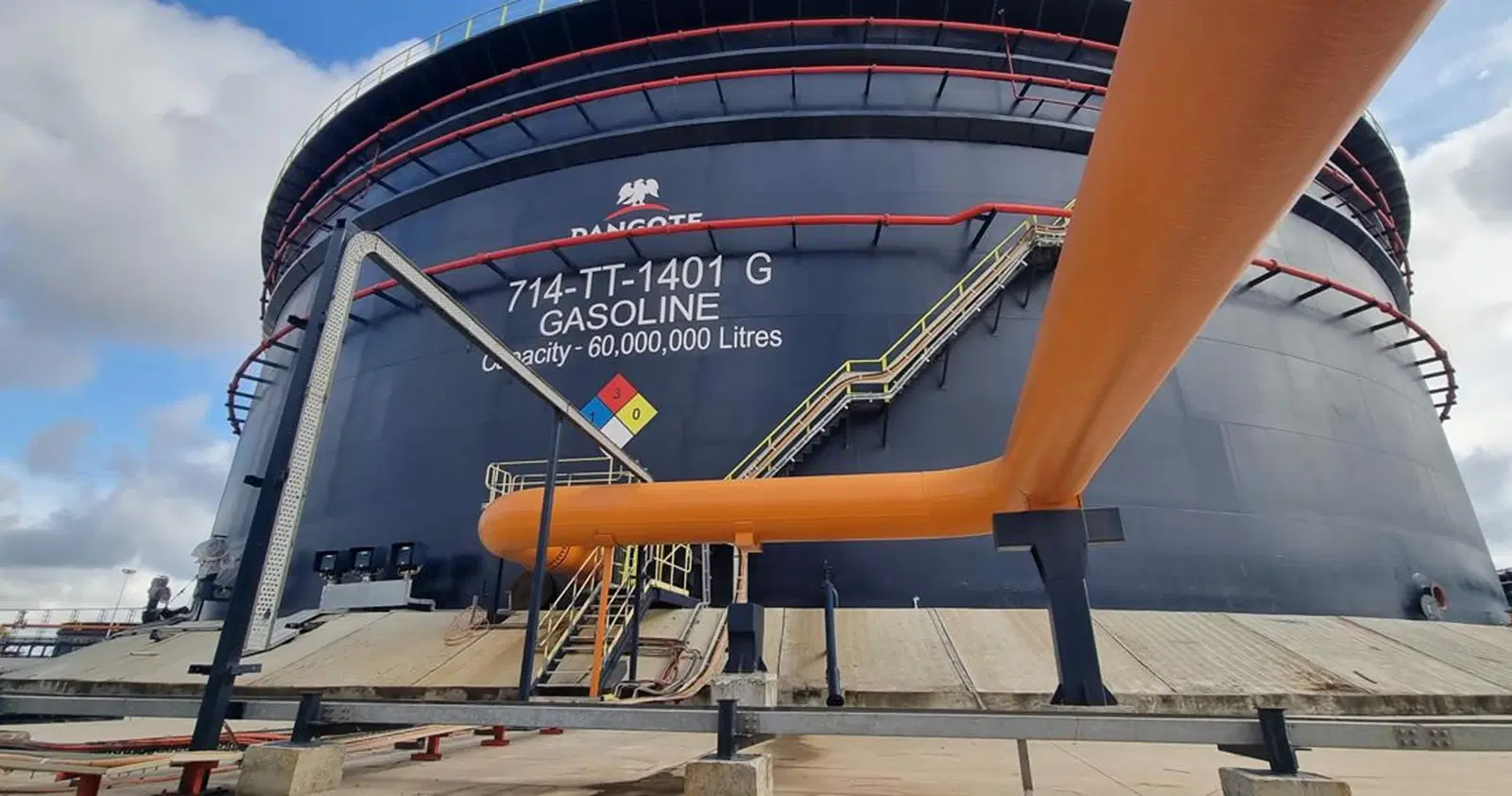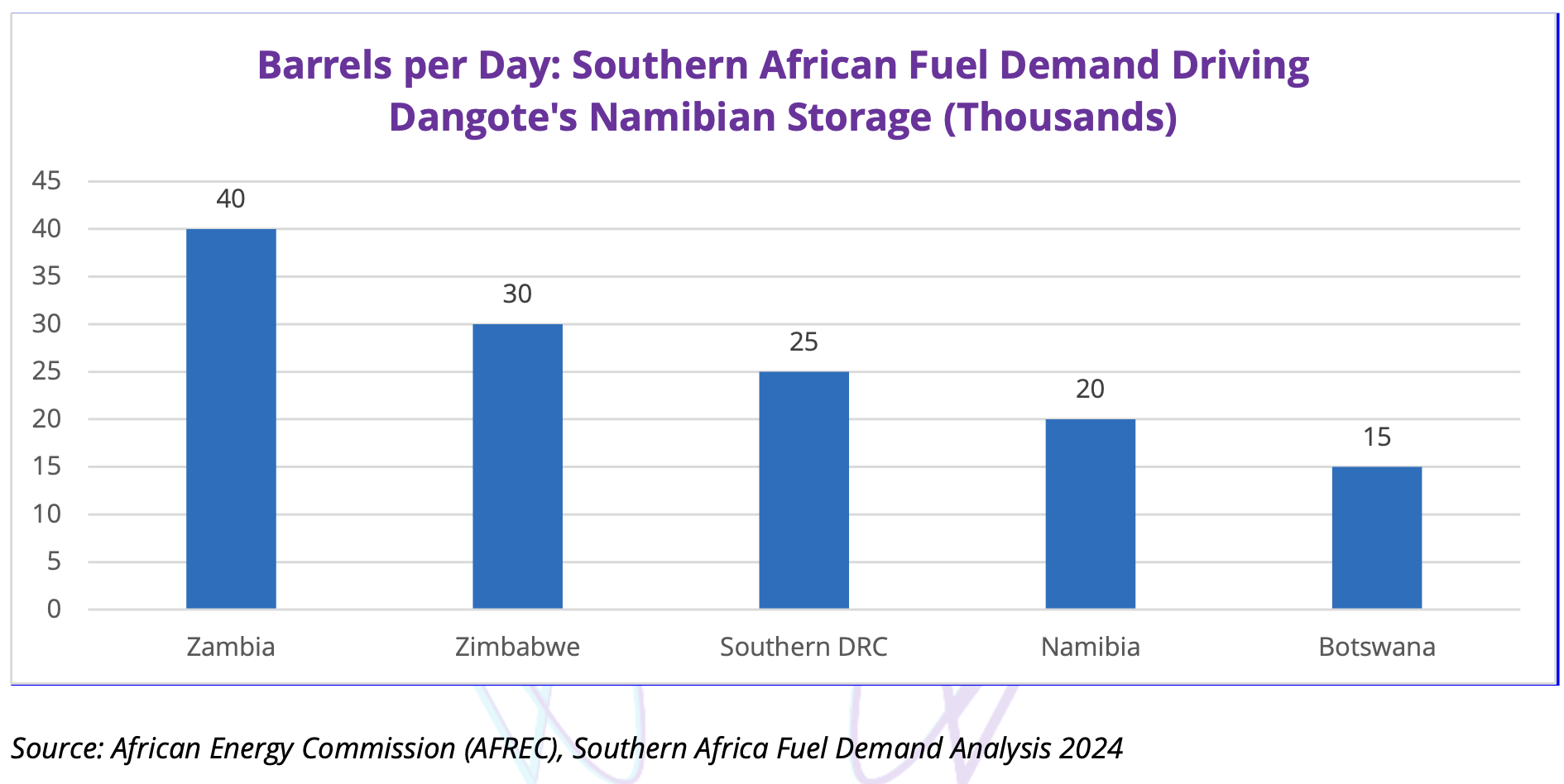Dangote Refinery’s Southern Africa Expansion to Boost Regional Fuel Security

The Dangote Refinery’s planned 1.6-million-barrel fuel storage facility in Namibia’s Walvis Bay will significantly enhance energy access for southern African nations. For Botswana, Namibia, Zambia, Zimbabwe, and potentially southern DRC—which collectively consume over 120000 barrels of and diesel daily—this infrastructure will reduce reliance on distant suppliers and price volatility. By positioning storage closer to these markets, Dangote can cut delivery times and costs, potentially lowering pump prices. For example, Zambia (daily consumption: ~40000 barrels) and Zimbabwe (~30000 barrels) currently import fuel from the Middle East and Europe, incurring long shipping delays. The Walvis Bay hub could shorten supply chains by up to weeks, stabilising regional fuel stocks and curbing shortages that periodically disrupt transport and industry.The refinery’s expansion aligns with southern Africa’s urgent need for affordable energy. Namibia, which consumes ~20000 barrels per day, aims to leverage Walvis Bay’s port to become a regional fuel distribution hub, while landlocked Botswana (~15000 barrels/day) and DRC’s southern provinces (~25000 barrels/day) stand to gain from more consistent supply. With Nigeria’s Dangote Refinery now producing 650000 barrels daily, the project could meet 15–20% of southern Africa’s current demand, reducing the region’s $10 billion annual fuel import bill. As Dangote shifts to 100% Nigerian crude by 2025, its cost efficiencies—already reflected in recent Nigerian price cuts to /litre ($0.50)—may extend to southern African markets, offering relief amid rising global oil prices. This initiative marks a pivotal step toward intra-African energy trade, fostering economic integration and energy sovereignty.

Conclusion
The Dangote Refinery's Walvis Bay storage hub represents a fundamental reconfiguration of southern Africa's energy economics. By positioning 16 million barrels of fuel storage within Namibia's strategic port, this $20 billion initiative will slash regional supply chains from 25-30 days to under 10 days, reducing logistics costs by an estimated $15-20/barrel for landlocked neighbours. For Namibia, Zambia, Zimbabwe, Botswana, and southern DRC (combined demand: 125000 bpd), this translates to potential annual savings of $15-2 billion off their $10 billion fuel import bill. This infrastructure transcends commercial logic to enable true resource sovereignty: African crude (extracted in Nigeria) refined in Africa (Lagos) for African consumers (via Walvis Bay) – cutting out $7 billion/year in non-African middleman premiums. As Namibia evolves into a regional energy hub, the project demonstrates how intra-continental partnerships can convert raw mineral wealth into affordable, stable energy, turning the AfCFTA vision into tangible cost savings for millions.
Contributors
- Bekithemba Ndimande | Rating Analyst | bekithemba@saratings.com
- Ted Maselesele CA(SA) | Rating Analyst | ted.maselesele@saratings.com
- Lomanja Malaba | Rating Analyst | lomanja@saratings.com
The analysis in this document is provided for information purposes only and should not be construed as financial or investment advice, nor should any information in this document be relied on when making credit rating decisions. The opinions and views expressed reflect the current opinions and assumptions of the credit rating team at Sovereign Africa Ratings. Actual results, performances, or events may differ materially from those expressed or implied in this document.
0 Article Comments
